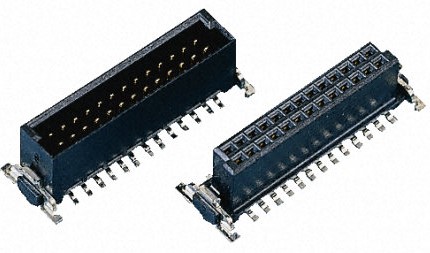Today, there are numerous parameters that users must consider when choosing the PCB connectors for their application. Nowadays, there are many more aspects that users need to consider than in the past when looking for the right connector.
The options and diversity of choices in the connector field are also increasing. A few years ago, when selecting a connector, it was sufficient to focus on temperature resistance and the number of plugs and unplugs. Now, users also need to consider aspects such as connector coatings, soldering methods, and even packaging forms suitable for safe transportation of automated instruments.
This article for the use of PCB connectors provide a few tips to help them choose the right connector for the application.
1.Technical parameters
First, you should understand the technical requirements of the application in order to find the right connector.
These parameters include: pin spacing, soldering method, rated voltage, rated current, number of insertions and extractions, temperature range, board spacing, connector geometry and solder hole diameter of the solder pad.
Based on these specifications, you can search the websites of connector manufacturers and distributors on your own. However, if more detailed specifications or even customer-specific designs are required, you should contact the connector manufacturer directly.
The timing of the contact is also important. The earlier the user contacts the vendor in the development process, the greater the chance of using a standardized connector or a slightly modified connector.

PCB Connectors
2.The appropriate design introduction time
For many printed circuit board designers, the arrangement of active components (such as microcontrollers, transistors or diodes) initially plays a decisive role. Passive components such as capacitors, resistors, and even connectors are often placed at a later stage in the development process. However, this approach can greatly increase the likelihood of conflicts.
For your next connector design introduction: it is recommended that both active and passive components can be considered.
If passive components are not considered during the development process, then in many cases the complexity and cost of the PCB design will increase significantly. This is because it is often no longer possible to use standard connectors in the end; instead, customer-specific connectors must be developed first.
For manufacturers, customer-specific connectors often mean that production equipment needs to be adapted or customer-specific devices and tools need to be produced. Depending on the degree of customization, this can increase costs from a few hundred to tens of thousands of dollars or euros.
However, for the number of prototypes, these tooling adjustments are not economically efficient. For this reason, it is crucial to consider the timing of connectors, as well as all other passive components, during the development process. After all, the profit margin of the customer's project should also be ensured.
3.Suitable packaging
In addition to the standardized cartons typically used for THT connectors,packaging can also be used for automated assembly.Packaging options include tape and reel packaging and cartridges.Strip box is usually used in the prototype stage or when the material quantity is small. The tape and reel option is more likely to be used for mass production and therefore can also be used in larger quantities.
In most cases,the upper geometric length limit of the cassette is approximately 500 mm.tape and reel packaging is determined by the height of the PCB connectors and the distance between the plates of the components in the conveyor. This means that more connectors can be transported and assembled on the PCB using the tape-and-reel packaging option.
4.Supply Chain
Many PCB connector manufacturers are located in the Far East. Due to the current shortage of raw materials and long lead times and other issues,small European manufacturers also have great opportunities.Many PCB assemblers and PCB developers are currently trying to find alternatives to connectors from the Far East through online material replacement.
However,users should consider quality differences, such as gold plating.While flash gold with very thin plating is used in most cases in the Far East,European plating companies usually use gold with a minimum plating thickness of 0.2 µm.
5.Partners
The last tip is that you should choose a reliable partner who has been operating for a long time. The manufacturer should not only reliably deliver high-quality products, but also provide the right combination of materials for the connectors. For connector partners, the connector coating should be of the same material type (if possible).
Combinations of tin-plated pin connectors and gold-plated socket connectors are possible, but are not conducive to prolonging the life of the system due to the phenomenon of corrosion of the connectors (electrochemical voltage series). In any case, it is preferable to use only tin-plated or solid gold connectors for the application.
Customers enjoy a great deal of freedom in choosing the right PCB connectors and packaging options. However, the magic triangle of cost, time and performance plays a crucial role.